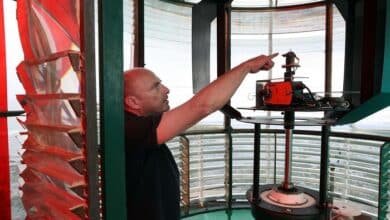Embracing the Challenge: Navigating La Course in Modern Cycling

La Course by Le Tour de France, introduced as a one-day women’s professional road race in 2014, symbolizes more than just competition; it represents a pivotal moment in women’s cycling. This race, held in conjunction with the Tour de France, offers a prominent stage showcasing elite female athletes’ endurance, strategy, and determination. As the race evolves, its impact on promoting women’s participation in professional cycling continues to grow, echoing the call for equality and recognition in the sport.
History and Evolution of La Course
La Course’s inception was a response to a growing demand for more visibility and equality for women in cycling, a sport long dominated by men. Over the years, la course has seen various formats, from circuit races to mountain stages, each iteration bringing new challenges and opportunities for athletes and organizers alike. The evolution of la course reflects broader changes in the sport, including increased media coverage and sponsor interest, which have propelled women’s cycling to new heights.
The Strategic Depth of La Course
Competing in la course requires more than peak physical condition; it demands acute strategic planning. Teams and individual riders must navigate the intricacies of pacing, positioning, and energy management, all while reacting to the dynamic elements of the race. Strategy in la course often involves forming alliances, knowing when to break away, and understanding the psychological warfare among competitors.
Training and Preparation for La Course
Preparation for la course is rigorous and multifaceted. Cyclists dedicate months to physical training, which includes endurance rides, sprint intervals, and strength training. However, mental preparation is equally crucial. Riders study the course meticulously, plan their strategies, and mentally rehearse the race day scenarios to ensure they are ready for every challenge la course presents.
Key Challenges in La Course
La course poses unique challenges that test the mettle of even the most seasoned professionals. From unpredictable weather conditions to the physical demands of steep climbs and rapid descents, riders must be prepared for anything. The physical toll of la course is matched by its mental demands, requiring riders to maintain focus and resilience throughout the race.
Technological Innovations in La Course
The influence of technology on la course is undeniable. From advanced bike designs and materials to wearable technology that monitors athletes’ performance, technological advancements have transformed how cyclists train, compete, and recover. These innovations not only enhance performance but also improve the safety and fairness of la course, ensuring that the best athlete wins.
Nutrition and Recovery in La Course
Effective nutrition and recovery strategies are vital for success in la course. Cyclists must manage their energy levels through careful nutrition before, during, and after the race. Recovery practices, such as proper hydration, sleep, and active recovery sessions, are crucial to help athletes bounce back from the exertions of la course and maintain peak performance throughout the cycling season.
The Role of Team Dynamics in La Course
While individual brilliance can shine in la course, the role of the team is indispensable. Team dynamics can influence race outcomes significantly, from protecting the lead rider and controlling the race pace to executing race strategies effectively. Understanding and leveraging these dynamics are crucial for success in la course.
Impact of La Course on Women’s Cycling
La course has played a significant role in advancing women’s cycling, offering a platform for visibility and advocacy. The race has not only highlighted the athletic prowess of female cyclists but also sparked conversations about gender equality in sports. The continued growth of la course can serve as a catalyst for more profound changes in the cycling world and beyond.
Fan Engagement and Media Coverage of La Course
The expansion of media coverage for la course has increased its popularity and drawn more fans to women’s cycling. Social media, live broadcasts, and interactive platforms have brought fans closer to the action, creating a more engaging and inclusive atmosphere. This enhanced media presence has been crucial in elevating the profile of la course and its participants.
Future Trends in La Course
The future of la course looks promising, with potential expansions in race duration and format. As global interest in women’s cycling grows, la course could lead to more comprehensive tours, mirroring the men’s Tour de France. Such developments would not only affirm the sport’s growth but also encourage more women to pursue professional cycling.
Championing Sustainability in La Course
Sustainability is becoming a central theme in la course, reflecting a broader shift within sports towards environmental consciousness. From reducing carbon footprints to promoting sustainable practices among teams and spectators, la course is at the forefront of advocating for a greener approach to professional sports.
Conclusion
La Course by Le Tour de France continues to be more than just a race; it is a beacon for change in the world of sports, particularly in cycling. As it grows, la course not only showcases exceptional talent and fierce competition but also champions the broader, essential conversations about equality and sustainability in sports. Its impact stretches far beyond the finish line, inspiring a new generation of athletes and fans alike.
FAQs About La Course
1. What is La Course by Le Tour de France? La Course by Le Tour de France is a prestigious one-day women’s road race that occurs annually in conjunction with the Tour de France.
2. How do athletes prepare for La Course? Preparation involves extensive physical training, strategic planning, and psychological readiness to tackle the unique challenges of la course.
3. What are the biggest challenges faced during La Course? Athletes face numerous challenges such as variable weather conditions, demanding terrains, and intense competition in la course.
4. How has La Course impacted women’s cycling? La Course has significantly boosted visibility, media attention, and sponsorship, contributing to the growth of women’s cycling.
5. What future changes are expected for La Course? Potential expansions include extending the race’s length and varying its format to enhance competition and viewership of la course.




